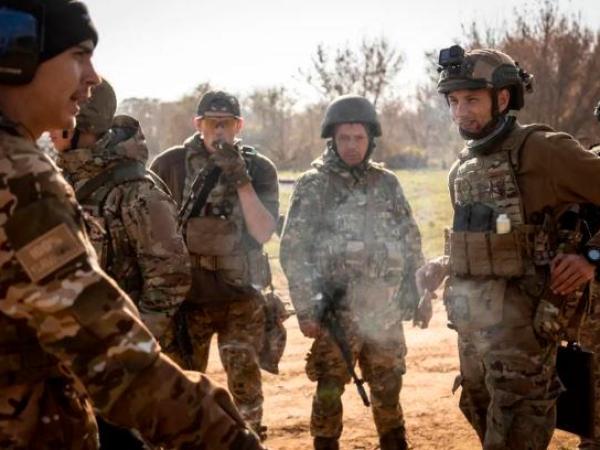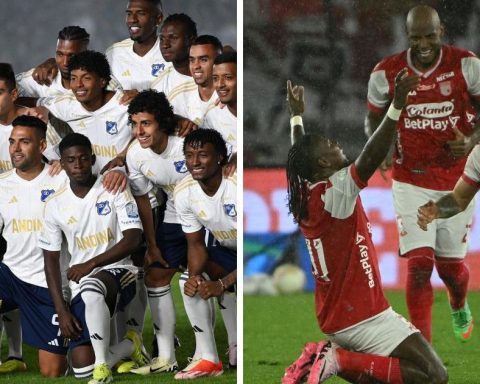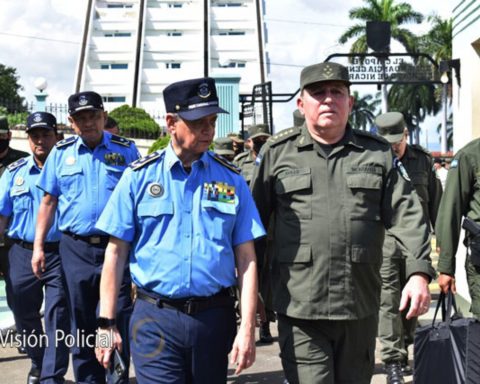Europe still seems to be digesting the idea that war has once again reached the heart of the Old Continent after decades of peace.
Russia’s invasion of the Crimean peninsula in Ukraine in 2014 set off alarm bells.
That was the first warning. The second would come on February 24, 2022, when Vladimir Putin’s government launched a surprise, bloody, large-scale military invasion of Ukraine.
The figures show that Europe is concerned about its security and faces a triple challenge: continuing to equip Volodymyr Zelensky’s army, modernising its arsenals and recruiting and training troops, including by returning to the old model of compulsory military service.
Faced with this new scenario, most European members of the North Atlantic Treaty Organization (NATO) increased their military spending last year. Their combined share accounted for 28% of the total budget of the Atlantic Alliance, the highest figure in a decade, according to a study by the Stockholm International Peace Research Institute (SIPRI).
“Since 2014, NATO has undergone the most significant transformation in collective defence in a generation. We have put in place the most comprehensive defence plans since the Cold War, with more than 500,000 troops currently on high readiness. We have also doubled the number of battle groups along its eastern flank,” the Brussels-based organisation’s communications office told BBC Mundo.
The countries that form this eastern flank, also known as the “Bucharest Nine,” are the closest geographically to Russia: Bulgaria, the Czech Republic, Estonia, Hungary, Latvia, Lithuania, Poland, Romania and Slovakia, in addition to the newcomers to the organization: Sweden and Finland.
“For European NATO states, the past two years of war in Ukraine have fundamentally changed the security outlook,” says Lorenzo Scarazzato, a researcher at SIPRI’s Military Expenditure and Arms Production Programme.
“This shift in threat perception is reflected in the rising share of GDP spent on military spending, with NATO’s 2% target increasingly seen as a benchmark rather than a threshold to be met,” he added.
But many analysts warn that spending more on weapons without personnel is not viable.
Hence, the idea of returning to compulsory military service or some form of recruitment has been gaining attention in recent years in several European countries.
“How military personnel are recruited and retained is a decision for our allies. Around a third of NATO members have some form of compulsory military service and others are considering conscription. The important thing is that allies continue to have armed forces capable of protecting our countries,” a NATO spokesperson told BBC Mundo.
With different formats and levels of commitment, up to 10 European countries maintain some scheme of forced military service or voluntary recruitment: Sweden, Norway, Denmark, Finland, Austria, Estonia, Latvia, Lithuania, France and Greece.
The difference between conscription and compulsory service is that in the former all men (and sometimes also all women) of a certain age must serve their country for a minimum period of time, while in the latter everyone is eligible to do so, but there is a chance that they will not be called up for active service.
The main changes have occurred in the Baltic and Scandinavian countries, in line with the heightened perception of risk from a possible Russian aggression or an escalation of the conflict.
“The entire former Soviet space and the Warsaw Pact countries in Eastern Europe continued to maintain compulsory military service. One of the most obvious reasons is the fear of Russia returning to the area and the resurgence of a belligerent attitude from its neighbour,” Luis Velasco, professor of History of International Relations at the University of Vigo and visiting professor at King’s College London, explains to BBC Mundo.
“But for Western European countries, after the fall of the Berlin Wall, it no longer made sense. There was no reason to keep such huge numbers of soldiers and reservists in operation,” he added.
“In addition, there was strong social pressure to end compulsory military service from the pacifist movement, the environmentalist movement and even the feminist movement.”
Latvia is the most recent country to have implemented compulsory military service. It reintroduced it on January 1 this year, after having been abolished in 2006. But its neighbours on the Baltic Sea have moved quickly too.
Lithuania had abandoned its draft in 2008 but reinstated it in 2016 following Russia’s first invasion of Ukraine in 2014, and Estonia has always maintained a form of compulsory military service since independence in 1991, although it has expanded the net of those required to be drafted.
Finland, which recently joined NATO, has maintained compulsory military service since World War II and is estimated to attract 27,000 male citizens each year.
And its two Scandinavian neighbours have not only returned to a similar model, but have also introduced parity: women must also do military service in Sweden and Norway.
Sweden, which joined NATO in March, had abandoned conscription in 2010 but reintroduced it in 2018 as the country prepared to join NATO.
In March, Denmark announced plans to extend compulsory military service to women for the first time and increase the standard service time from four to 11 months.
“There are certain countries with an outstanding level of awareness regarding national defence, such as Finland, where military service has a very high level of acceptance in society, close to 90%,” Francisco Gan Pampols, a retired lieutenant general in the Spanish army, reminds BBC Mundo.
The Nordic people understand very well the threat that looms over them and where it comes from, he added.
“And there are other countries where it would be practically impossible to reintroduce this concept because the sense of national defence is very low. Defence is left to a professional army and they are responsible,” explains Gan Pampols.
But the fact is that there is currently no army in Europe that could sustain the war effort that a conflict like the one in Ukraine entails without mobilizing additional resources.
Experts say that not only do they need to recruit more troops, but they also need to be trained, sent to the front and given time off when they return. And in that cycle, a ready-made replacement is needed.
The other challenge facing countries is the degree of technical development of their armies, which has increased exponentially.
“As specialization increases, so does the time required to acquire it. Today, vacancies in the army are positions that require a lot of training and then practice. First you have to train and then you have to practice. And that takes time,” says Gan Pampols.
He gives the example of the drone operator position. The course to pilot them is short, but then you have to train to do it at night, with infrared vision systems or virtual reality glasses.
These are processes in which the amount of time required to ensure success skyrockets.
“We are not rearming because we want war. We are rearming because we want to avoid it,” Prime Minister Mette Frederiksen said when announcing Denmark’s military plans.
Military intelligence agrees: the aim of Europe’s budget-boosting plans is not to go to war; it is to deter the enemy and have a credible strategy.
To do this, we need to improve our arsenal, as well as our human and training capabilities.
Germany has understood this very well. Its analysts are working on a scenario for 2030 in which Europe will be involved in what military jargon calls “a high-intensity regional conflict.”
Faced with this possibility, the government of Olaf Scholz has determined that the number of military personnel at its disposal and the level of danger facing it are not proportional and is therefore considering reinstating compulsory military service.
Germany ruled out such recruitment in 2011, but Russia’s war in Ukraine has forced it to reconsider.
With such a measure, the country would show that it is credible and at the same time protect its most valuable asset: its exports. Germany increased its defense budget because its economic capacity is based on the fact that there is nothing that puts its production at risk.
Germany believes that a regional conflict would put its communications, supplies and exports at risk, and its main partners in Europe would enter into a war economy and stop buying from it.
As early as 2022, Berlin has promised to invest massively in its military forces, which it considers outdated and small, in an effort to play a much more assertive role in defending Europe.
But to this day, as in every other Western European country, conscription has always been something that governments have been reluctant to introduce.
“Not only is it unpopular with those it is asked to serve – and their families – but it also removes human capital from any state’s workforce and has economic implications,” writes Rod Thornton, professor of International, Defence and Security Studies at King’s College London on The Conversation website.
The geopolitical and military map of almost all European countries has changed significantly over the past decade, but rebuilding defence systems takes much longer. And Russia is well aware of this, analysts warn.
Click here to read more stories from BBC News Mundo.
You can also follow us on YouTube, Instagram, TikTok, X, Facebook and our new WhatsApp channel, where you will find breaking news and our best content.
And remember that you can receive notifications in our app. Download the latest version and activate them.
















